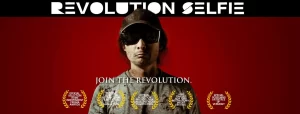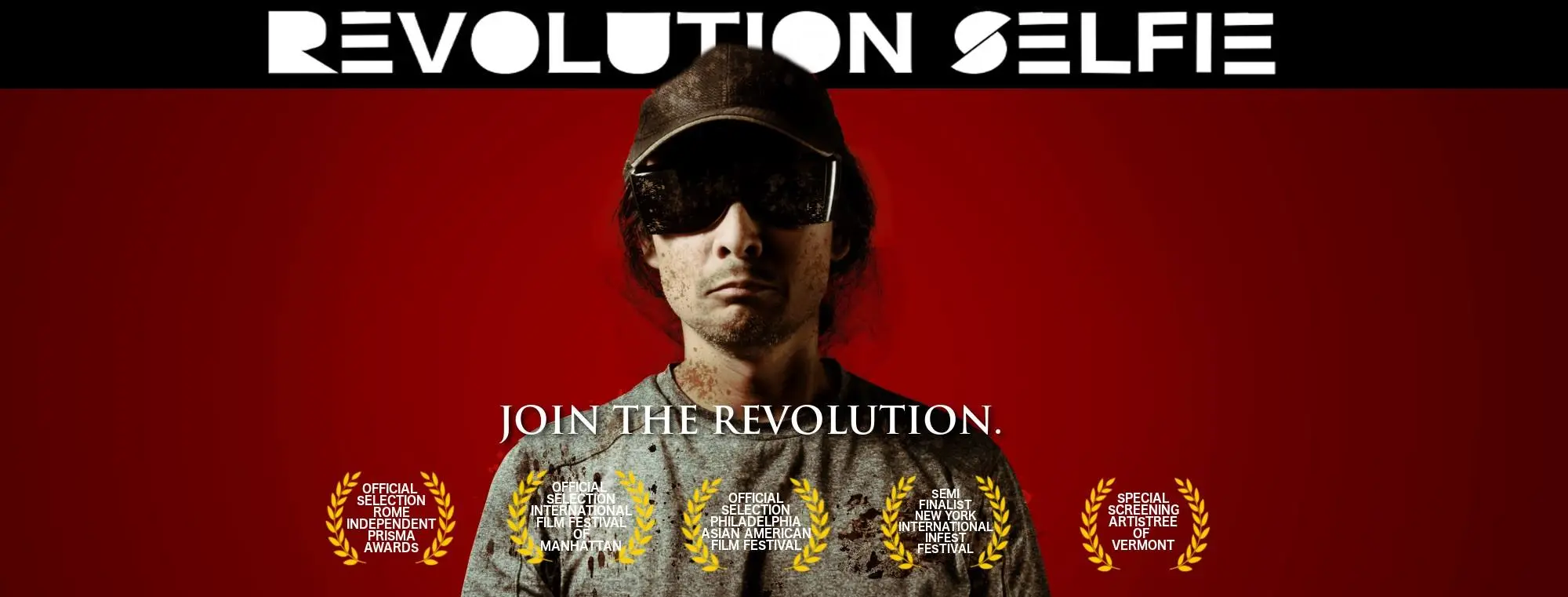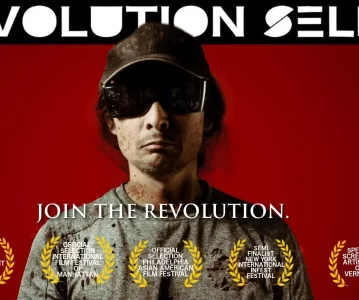Paul Romano reviews documentarian Steven de Castro’s 2017 film on the New People’s Army (NPA), ‘Revolution Selfie: The Red Battalion,’ and discusses a recent screening and Q&A with de Castro held at Spectacle Theater in Brooklyn, NY.

The most obnoxious tourist the US has yet produced straps a GoPro to his chest and goes to Manila. He tours slums and marginal neighborhoods; he speaks with, befriends, and feeds beggar children; he marvels at the abject poverty of it all.
Then, in an instant, the call he has been waiting on comes and he is spirited away to some obscure locale to embed with the New People’s Army (NPA). He follows them on various “long marches” (a joke the NPA volunteers don’t tire of making) and sleeps in their camps. Now living amongst them, he films their day-to-day life and asks them mundane questions– stripped of the direction or profundity of a ‘great’ interviewer.
Finally, he returns home, cuts together his haphazard, and often poorly framed footage, narrates his adventure, layers it with cheesy video game graphics and music, and sends his work out into the world. And– astoundingly– it all works — coming together as a thing of beauty and deep reflection on the work of revolution and revolutionary living, as well the position of observers and putative supporters in the Western Left.
In early December, I had the opportunity to attend a screening of Steven de Castro’s Revolution Selfie at the Spectacle Theater in Brooklyn. While the film was released nearly five years ago, it has had a relatively quiet life in the US, with little in the way of festival or commercial distribution or critical notice. Its appearance and run at Spectacle seems to have been the product of a fortuitous posting of the trailer on a non-film Facebook group that a member of the Spectacle collective came across while scrolling. Intrigued by a trailer which “brimmed with possibility of some unseen masterpiece,” they reached out to de Castro to arrange for a series of screenings in late 2022 and, in the particular instance of my viewing, a Q & A with the filmmaker.
We’re (or at least ‘I’m’) lucky that happenstance played out this way, though (as well as that small cinema collectives like Spectacle are able to maintain their existence and run otherwise unheralded gems), because Revolution Selfie is a very good film. Produced on an absolute shoestring budget, it navigates, mostly from a first person perspective (frequently using a GoPro strapped to de Castro’s chest, producing shaky, sometimes headache inducing shots) de Castro’s journey, first through Manila and then into a rural area of the Philippines (the area he ends up in is never specified for obvious reasons) to embed with (and importantly not provide any material aid to) an NPA unit operating in the area. Interestingly, one of the first challenges de Castro presents is the initial question of whether, after having communicated with the group from the US and subsequently traveled to Manila, he will even get the final call from the NPA to be picked up and placed with a unit so that his filming can proceed.
The NPA itself is the armed wing of the Communist Party of the Philippines (CPP), though the term NPA is frequently used to refer to both the armed wing and the overarching party-armed wing formation, also referred to as the CPP-NPA. A product of internal conflicts and splits within the CPP, the NPA was formed in 1969 as part of a greater resurgence of Maoist thought within the Filipino Left and Communist Movement. Working from a Marxist-Leninst-Maoist ideological and strategic foundation, the group has historically oriented its strategy around mass line rural struggle, focusing on the three parallel and central projects of armed struggle, agrarian revolution, and building a mass-bases in the countryside. In practice, this entailed armed campaigns to liberate rural areas from state military control or weaken the power of local landlords, redistribution of land among peasant communities, and the development of systems and organs of revolutionary-democratic government (barrio organizing committees) in communities within NPA areas. Estimates for the number of people living under the governance of these barrio organizing committees range from 400,000 to 1,000,000 at various times.
It is obviously hard to assess the military strength and historical success of the NPA, but the consensus seems to be that the organization is composed of at least 5,000 armed volunteers. It seems to have grown fairly consistently since its founding, with particular periods of growth and success during the Marcos dictatorship and the late 2010s. As no good deed or revolutionary accomplishment goes unpunished, the NPA was designated a terrorist group in 2002 by the Bush administration and in 2005 by the EU; both designations remain in place today, influencing many of the qualifications and caveats de Castro includes in the film.
While the NPA, its members, and the communities it fights for and draws support from are the protagonists of the documentary, de Castro provides only superficial focus on the group’s ideology and strategic character, as well as the violence of civil war. He’s not particularly concerned with the NPA’s line on neo-imperialism or neo-feudalism in the Philippines, periphery-metropole relations, or the current stage and character of global capital. Similarly, for him, the more important, defining violence of the conflict is that of day-to-day life in the Philippines, captured in his tours through impoverished communities in Manila and snapshots of rural enclosure and displacement and urban death-squad killings. While the omnipresence of conflict, weapons, military discipline, and death is not ignored, the NPA volunteers he presents are not warriors, they are comrades and community members who fight, take breaks, have families, and move in and out of the active armed struggle throughout their lives.
Thus, we are instead presented with a vision of life in the rearguard — those communities who, shielded from the reach of the state by the front lines, have become nearly fully integrated with the NPA (or vise versa). In these communities, civilians move freely in and out of NPA camps where volunteers provide what services they are well placed to provide (teachers and a dentist seem in especially high demand). In neighboring community centers, volunteers and political officers help to facilitate processes of revolutionary self-government, self-policing (intervention in domestic violence is a particular focus of these efforts), and community development (in a material sense). The whole process is funded by the redistribution of taxes and other wealth transfers imposed on landlords, mining operations, and other area capitals back to constituent communities.
De Castro’s particular focus is on the individuals who choose to fight, the communities that cohere around their struggle, and the subjectivities that are built through this process. In a strange but effective way, his seemingly superficial interviewing technique provides space for the volunteers to appear as humans, rather than agents of history. Taken together with the usage of video game graphics and a cheesy soundtrack, these elements act to strip the film of the aesthetics of poignancy in a manner that frees its subjects of much the expectations which a ‘war’ or ‘political’ documentary might otherwise impose. Instead, what we get are individuals horrified and traumatized by the state of life in the Philippines, and committed to rectifying these wrongs and achieving (perhaps ill defined, but very tactile and immediate concepts of) justice, equality, and freedom. For these volunteers, the NPA’s armed struggle provides an avenue to create these things for themselves and realize the society they are fighting for in the spaces secured in the rearguard.
Thus, while the reality of the armed component of the armed struggle is an ambient visual presence throughout the film, actual military violence takes the stage only in fleeting moments. Though committed and disciplined, the volunteers we meet aren’t the stereotype of hard-noes cadre members dedicated to a world-historical, and likely suicidal, struggle for revolution that you might (or, at least, I sometimes do) imagine making up the ranks of groups like the FARC, Naxalites, or PKK. They are simply people who are attempting daily to realize revolution both through the violence of the front-line struggle against the state, forces of empire, landlords, and Capital and the creative energy of the rearguard action to build a society worth living in.
Similarly, the life stories of various volunteers trace smooth and periodic transitions into and out of civilian life for NPA members. One volunteer leaves combat for three years following the birth of her child, returning to the frontlines when she feels that child no longer needs her daily presence. Another spends close to a decade recovering from a horrific gunshot wound, but decides to return when he feels physically capable of fighting again. Another leaves the frontlines for over ten years following the traumatic deaths of a number of her comrades; she takes up arms again when she feels mentally and emotionally capable of fighting. Weddings, childbirth, family obligations, celebrations, education, religious obligations, and the demands of mental and physical health, as well as rehabilitation, punctuate NPA members’ careers as armed combatants, seemingly with no sense or suggestion of dereliction of duty or lack of dedication.
Parallel to all of this, the film also provides an uncomfortable reflection of the viewer and of Global North supporters of the NPA and other armed leftist groups. De Castro is an effective avatar for the worst disaster tourist imaginable. His tour through impoverished communities in Manila bears a disconcerting visual similarity to a visit to a zoo or history museum (a striking example of the efficacy of the first-person camera perspective). Once in the field, he similarly approaches (on camera, at least) and interviews NPA volunteers with the same sense of awe at their dedication and coolness (and, they do come across as both cool and dripped out) that a dipshit like me might in that situation. Watching it in a theater, it felt like going abroad with an aloof parent who can’t quite interact with locals right and whose actions somehow reflect on and represent you to those locals as well. The preceding praise notwithstanding, I was left with a sense of dirtiness and guilt about my own perspective on and veneration (fetishism?) of the NPA’s and other comrades’ armed struggles abroad– always courageous and righteous, always comfortably distanced from my own.
Still, the core of Revolution Selfie is a deeply sensitive and humanizing portrait of the volunteers who make up the NPA, as well as the constituent communities they are embedded in and, in fact, indistinguishable from.
As someone who supports armed leftist movements as a reactive matter of ideological and ethical paradigm, I walked into this film wondering if it would answer certain questions: what brings a typical NPA volunteer to the struggle? what do they realistically hope to achieve in a 50-year running civil war? what do they see as the endgame of their involvement? De Castro provides a clear and compelling answer. Describing the constituents and volunteers of both the NPA and Yazidi YPG units (the subject of his next feature) in a Q & A after the film, he told the audience that for his interlocutors ‘revolution is not a goal for the future — revolution is something that is happening now’ and a matter of existential necessity. In Revolution Selfie, this is what we end up seeing — NPA volunteers for whom revolution is the conscious creation and daily reproduction of the world anew in the spaces they have freed from Capital and the Filipino state.





